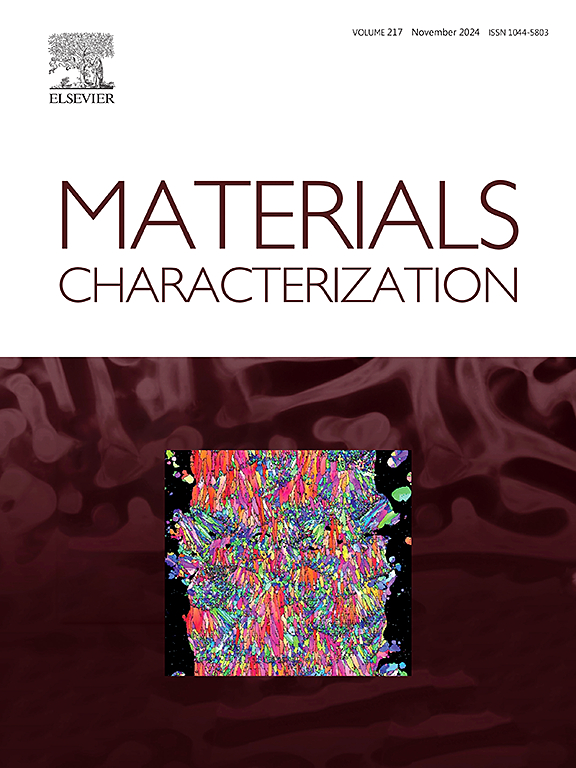Effects of B and C elements on microstructure, mechanical and tribological properties of TiN coating deposited by PACVD
IF 4.8
2区 材料科学
Q1 MATERIALS SCIENCE, CHARACTERIZATION & TESTING
引用次数: 0
Abstract
In recent years, hard coatings have gained various industrial applications due to their excellent properties. This research describes the effects of adding B, C and both elements on the microstructure, mechanical and tribological properties of TiN film synthesized by PACVD. The results indicate that incorporating boron and carbon into TiN results in the creation of a nanocomposite microstructure, where amorphous phases surround nano-crystals of TiN, h-BN, and TiB2. The existence of carbon in the TiCN and TiBCN coatings manifests as DLC and amorphous carbon. The use of BBr3 and CH4 for depositing TiBCN coatings reduces the intensity of plasma formed surrounding the samples and increases the etching rate, resulting in a thickness reduction from 2.16 to 0.28 μm. The introduction of boron and carbon into the TiN coating enhances its hardness from 16.6 to 30 GPa, attributed to the formation of nanocomposite microstructures. TiBCN coating exhibits an indentation toughness value of 1.52 ± 0.2 MPa.m0.5, the highest among the deposited coatings. The addition of carbon to both TiN and TiBN coatings reduces their coefficients of friction, decreasing from approximately 0.55 and 0.4, respectively, to about 0.3. This reduction is attributed to the creation of lubricating compounds like amorphous carbon and DLC.
B、C元素对PACVD沉积TiN涂层微观结构、力学性能和摩擦学性能的影响
近年来,硬质涂料因其优异的性能得到了广泛的工业应用。本研究描述了添加B、C及其两种元素对PACVD法制备TiN薄膜的微观结构、力学性能和摩擦学性能的影响。结果表明,将硼和碳加入到TiN中可以形成纳米复合结构,其中非晶相围绕着TiN, h-BN和TiB2的纳米晶体。碳在TiCN和TiBCN涂层中的存在表现为DLC和非晶碳。使用BBr3和CH4沉积TiBCN涂层降低了样品周围形成的等离子体强度,提高了蚀刻速率,使厚度从2.16 μm减小到0.28 μm。硼和碳的加入使TiN涂层的硬度从16.6 GPa提高到30 GPa,形成了纳米复合微观结构。TiBCN涂层的压痕韧性最高,为1.52±0.2 MPa.m0.5。在TiN和TiBN涂层中添加碳可以降低其摩擦系数,分别从约0.55和0.4降低到约0.3。这种减少是由于产生了润滑化合物,如无定形碳和DLC。
本文章由计算机程序翻译,如有差异,请以英文原文为准。
求助全文
约1分钟内获得全文
求助全文
来源期刊

Materials Characterization
工程技术-材料科学:表征与测试
CiteScore
7.60
自引率
8.50%
发文量
746
审稿时长
36 days
期刊介绍:
Materials Characterization features original articles and state-of-the-art reviews on theoretical and practical aspects of the structure and behaviour of materials.
The Journal focuses on all characterization techniques, including all forms of microscopy (light, electron, acoustic, etc.,) and analysis (especially microanalysis and surface analytical techniques). Developments in both this wide range of techniques and their application to the quantification of the microstructure of materials are essential facets of the Journal.
The Journal provides the Materials Scientist/Engineer with up-to-date information on many types of materials with an underlying theme of explaining the behavior of materials using novel approaches. Materials covered by the journal include:
Metals & Alloys
Ceramics
Nanomaterials
Biomedical materials
Optical materials
Composites
Natural Materials.
 求助内容:
求助内容: 应助结果提醒方式:
应助结果提醒方式:


